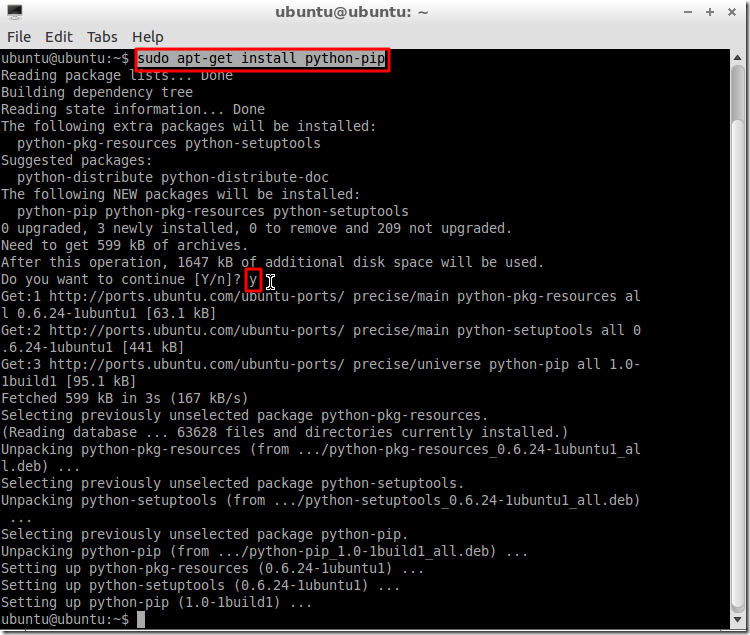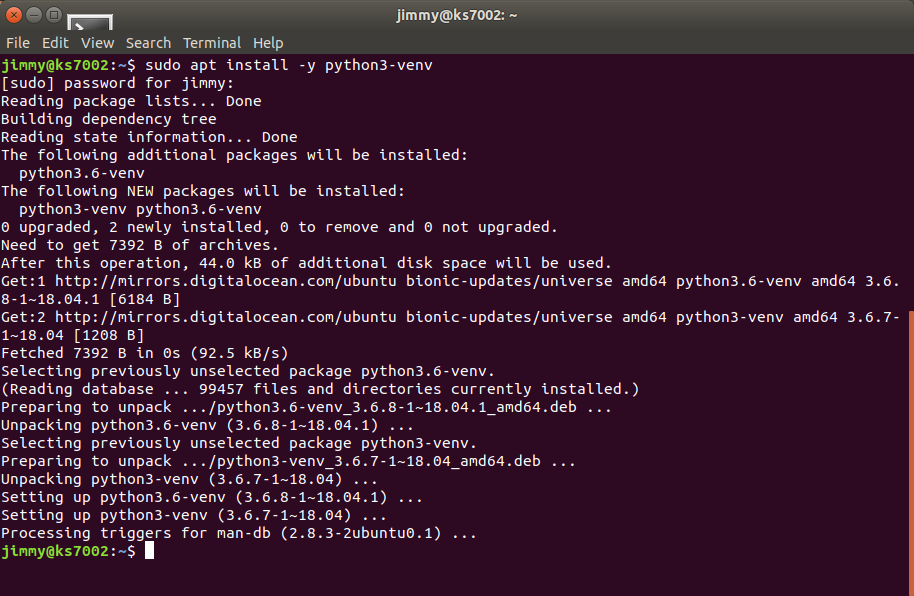
- #SUDO APT UPDATE PYTHON HOW TO#
- #SUDO APT UPDATE PYTHON INSTALL#
- #SUDO APT UPDATE PYTHON UPDATE#
- #SUDO APT UPDATE PYTHON SOFTWARE#
- #SUDO APT UPDATE PYTHON CODE#
Python is an immensely popular choice across many industries and applications, ranging from web development to data analysis, and even machine learning.
#SUDO APT UPDATE PYTHON SOFTWARE#
However, some software requires specific Python versions, so you may want to keep multiple versions installed simultaneously to accommodate this. You can also remove the old version if it’s no longer necessary.
#SUDO APT UPDATE PYTHON CODE#
You’ll need to download the source code of the desired version, extract it, and then execute the configure, make, and make altinstall commands.
#SUDO APT UPDATE PYTHON UPDATE#
To update Python installed from source code, the process is the same as the installation process. Sudo add-apt-repository ppa:deadsnakes/ppa sudo apt updateĪgain, please note that this command will update all the packages on your system, including Python. You can do this by running a simple command in the terminal: Checking for Python Installation on Ubuntuīefore installing Python on your installation of Ubuntu, it’s a good idea to check if Python is already installed. Read the rest of the article for tips on getting the latest version, as well as more advanced installation methods.
#SUDO APT UPDATE PYTHON INSTALL#
Sudo apt install python3 is the command that will install your OS’s default version of Python 3 in Ubuntu.
#SUDO APT UPDATE PYTHON HOW TO#
TL DR How to install Python 3 for Ubuntu? Continue reading to learn step-by-step how to update and install Python on Ubuntu systems. It’s no wonder that Python has become a staple in the software development world. Python is an incredibly versatile programming language with applications ranging from web development to data science and artificial intelligence. We’re happy to share the tips and tricks we use to keep our customer’s dedicated servers running smoothly, whether you’re an IOFLOOD customer or just a curious onlooker. Learn how to install Python 3 in Ubuntu easily in this comprehensive guide.Īt IOFLOOD, most of the internal tools we create these days are written in Python. No problem! We address that common issue in today’s article. Look for credible PPAs with CI/CD running.You have a Python script you’d like to use, but you’re not sure if your server has Python installed, or if it’s running the latest version. To wipe built artifacts, you can just rm -rf /usr/local/* sudo ldconfig.įinding a PPA is decent option too keep in mind that a PPA is just someone else's private build. This is the best way to manually test patches and/or pre-releases (those alpha-, rc- builds) of CPython itself. You have the whole /usr/local at your disposal: sudo chown -R `whoami` /usr/localĬompiling CPython from source is well-explained on the web just don't forget your /usr/local prefix. Leave it to dpkg, save yourself some confusion.

Leave /usr alone you can look but you don't touch. Basic pitfallsįor the brave but unwary, a few classic pitfalls when trying to manually set up a newer CPython on Ubuntu. At the very least, make yourself comfortable with pip before going deeper. There's humongous variety of tools in the Python ecosystem in 2020. The conda tool - which is a totally separate python package repository and installer (think: fork of PyPi). Ruby's bundler or Cabal sandbox may be familiar analogues. It's 100% developer-oriented, but you'll likely need to use it (perhaps underneath a few wrappers, such as tox) to work with people's source packages. Then for example, howdoi -all compile python3 ubuntu. Quick tip: try pip3 install -user howdoi (may need to apt install python3-setuptools python3-pip once, before that works). Pip/ pip3/ python3 -m pip - this is the npm for Python. Upd: I keep seeing this upvoted notice that this is a 9-year old answer, things have changed.įrom a superuser perspective (not Python developer's), the next things I'd suggest learning to use: Go and sudo apt-get install python3 and code for 3.x Python bravely just remember to launch your scripts with python3 and use #!/usr/bin/env python3 shebang line. If you don't care about fancy gears of your system and just need newer Python - see no obstacles. This can't be done easily that is, you can't just "switch" your system to Python 2.7 and delete the older version.īut. To switch the system to Python 2.7 there needs to be done a piece of work, consisting of updating and re-testing all the scripts. At the moment, the code runs on Python 2.6 - so this version is the default upon installation and the code won't easily run on, say, Python 2.7 - because incompatibilities exist.

So in fact, fairly large part of the system is written in Python. Of particular importance is the fact that one of Ubuntu policies is to extensively use Python for writing end-user software.


For instance, Python 2.6, Python 2.7, Python 3.1 all live in separate packages on Ubuntu. Some major, very- and incompatibly-different versions get their own packages. As others already noted, bare sudo apt-get install package will install latest available version, replacing the older one if needed.īut with some software (among which is Python) the situation is somewhat different.


 0 kommentar(er)
0 kommentar(er)
